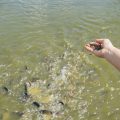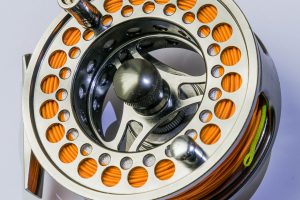Catfish dig holes using their heads, mouths, and jaws. Do you ever find yourself scratching your head, wondering how fish like catfish manage to dig so efficiently? The answer likely has to do with how their jaw muscles are structured. This article will explore how the catfish clan works and how it enables them to dig quickly and efficiently.
Catfish are a common sight in many freshwater ecosystems throughout the world. Catfish use their mouths and jaws to excavate holes in the mud and soil. Many don’t understand why catfish dig holes, but they believe they use the tunnels as shelters and juvenile places to hide from predators. They are excited to fish in their own right but curious about their digging behavior.
What Causes Catfish to Live in Holes?
One popular theory about why catfish live in holes is that they use them as a refuge from predators or as a place to cool off during hot weather. Another view is that the holes are used to lay eggs. They use these holes to stay safe during the drought and to hide from predators. Catfish live in holes because they need to stay hidden from predators. They dig holes in the mud or sand to hide in and avoid being eaten by bigger fish or animals. Finally, some believe that the holes provide access to food and water. Regardless of the real reason, it’s clear that catfish love holes.
Are catfish capable of digging holes?
Catfish are capable of digging holes. They use their heads, mouths, and powerful jaws to create tunnels in the substrate. This allows them to access areas beneath the water surface that they wouldn’t be able to reach otherwise. Most catfish can dig holes to get to food or shelter. This behavior is often seen in catfish populations that inhabit slow-moving or stagnant waters, where digging provides an advantage in finding food or avoiding predators.
What Size Are Catfish Holes?
The size of catfish holes varies depending on the type of catfish. Some smaller catfish dig small holes, while giant catfish can dig much larger holes. Catfish hole diggers are not restricted to digging small tunnels. Some catfish diggers can dig holes as large as twelve inches across and six inches deep. The size of the hole is determined by how much food the catfish can find and consume. Catfish hole diggers typically prefer areas with aquatic vegetation and mud flats. The size of catfish holes can vary depending on the species of catfish, but they are usually around 1-2 feet deep and 2-4 feet wide.

When Catfish Get into Holes, How Do They Do It?
Catfish typically dig their holes by pushing the substrate down with their bodies and then moving the soil around with their front fins. They use their barbels to feel for objects and then suck them into their mouths to remove any sand or dirt.
Catfish Reproduce in This Way
The male catfish digs a hole in the substrate, and then the female catfish comes and lays her eggs there. The fry hatch from the eggs and eat the food left over from the adult fish. The female then fertilizes the eggs, and the larvae hatch out. The larvae grow into juvenile catfish, and the cycle repeats.
This Is What Catfish Prefer
Catfish prefer to dig holes in soft mud or sand. They use their mouths and head to scrape away at the soft material until they’ve created a hole large enough to fit through. This hole often leads down to a hidden area where they can find food or water. This might sound strange to some people, but it is an excellent way for these fish to survive. By digging down into the soil, you can create a warm and safe home protected from predators and other environmental hazards.
It’s How Catfish Find Food So Brilliantly
The bottom of a stream or river is perfect for catfish, as they can dig down to find food. Catfish use their heads and powerful jaws to break through the soil and find worms, insects, and other small creatures.
What Are the Best Ways to Find Catfish Holes When Fishing from Shore?
When fishing from shore, one of the best ways to find catfish holes is to look for areas recently disturbed by the fish. For example, if you see a large fish swimming around in an area that is muddy or has seaweed on top, that’s likely where a catfish is hiding. Be sure to use a net if you catch a fish this way – catfish can be strong. You can also try fishing around rocks or other natural objects that have been dislodged and left in the water by the fish. Finding catfish holes when fishing from shore can be challenging, but there are some practical ways to do it. One way is to look for depressions in the ground that may have been created by the fish digging.
Catfish Holes Are Dangerous Places for Noodling
Noodling is a popular sport for catfish. Noodlers use whatever they can find to lure the catfish out of their hiding places and then try to hook them with a piece of bait. Catfish like to stay in cool water, so noodling around their holes can be enticing, but be careful not to get too close to the hole – it’s easy to fall in and get stuck.
Next Time I Go Fishing, Should I Target Those Holes Catfish Dig?
When most people think of fishing, they think of trying to reel in a big fish with their hands. But what about the fish that just doesn’t want to be caught? Catfish are fish that love to dig holes in the ground to hide. If you’re looking for a different way to catch a fish, consider targeting those holes catfish dig. Here’s how:
-
- Find catfish holes before you go fishing. Knowing where the holes are will make it much easier to find them while you’re out on the water.
-
- Use your bait and lures just like you would with any other fish. Be creative and try different baits and attracts to see what works best for catching catfish.
-
- Cast your line into the hole and wait for the catfish to take your bait. Once caught, reel them in quickly.
When fishing for catfish, they must be aware of the holes they dig to get around. These can be found throughout the river system, so targeting those areas in the drought season is essential.
Conclusion
If you’re wondering how catfish dig holes, you’re not alone. There are a lot of questions about these fish that scientists still don’t have answers to. However, we can understand their behavior and ecosystem better by understanding how catfish dig holes. Like most people, you’ve probably seen pictures of fish swimming around in amazing, elaborate tunnels. These tunnels are called “catfish digs” and are essential to the catfish’s life cycle.











